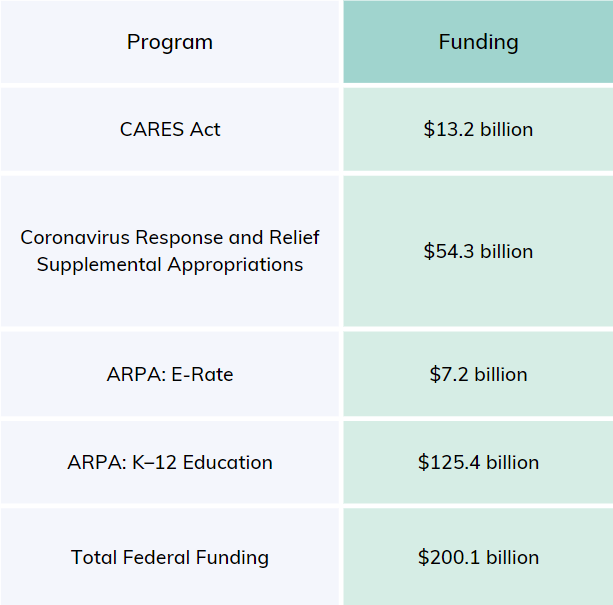Since the beginning of the pandemic, the federal government has provided $200 billion in aid to public schools across the U.S. According to The Learning Institute, this equates to approximately $4,000 per student.*
The investment breakdown is as follows:

These programs have allowed school districts additional funding for increased staffing as well as paying for tutoring programs and necessary technology to help with recovery.
Research has shown, one of the most effective ways schools can help students catch up is to implement high dose tutoring programs for students who have fallen further behind. ** However, tutoring programs come with a cost that may cause districts to contemplate how to continue paying for these programs once the temporary funding has been spent.
The National Student Support Accelerator has put together the following chart to help identify additional funding sources:***
Title I
In addition to funding supplemental reading and math instruction, Title I dollars can support extended or additional instructional time, including tutoring. Many districts may have remaining School Improvement Grants (authorized under section 1003(g) of Title I) from 2017, and can use these funds for tutoring as well, as long as the tutoring program meets the ESSA standards (source).
Title II
If your tutoring program is designed such that it improves teachers’ overall instructional practice, Title II funding could be used to support your tutoring program.
Title IV
Title IV, Part B, also establishes funding for 21st Century Community Learning Centers (21st CCLCs). Any public or private organization is eligible to apply for these funds to support after-school activities, including tutoring. See FAQ G-1 in the U.S. Department of Education Non-Regulatory Guidance (source).
IDEA
If a tutoring program supports both students with IEPs and students without IEPs, a district can fund the portion of the program supporting students with IEPs with IDEA funding (source). Districts also can also use up to 15% of their IDEA Part B funds for coordinated early intervening services. These are services for students with no disability classification who struggle to succeed in the general education environment. The U.S. Department of Education has specifically mentioned tutoring as a coordinated early intervening service (source).
School Improvement Grants
School Improvement Grants can also be used to support tutoring programs when targeting high-needs populations. This document notes how they can be used for ELL students specifically.